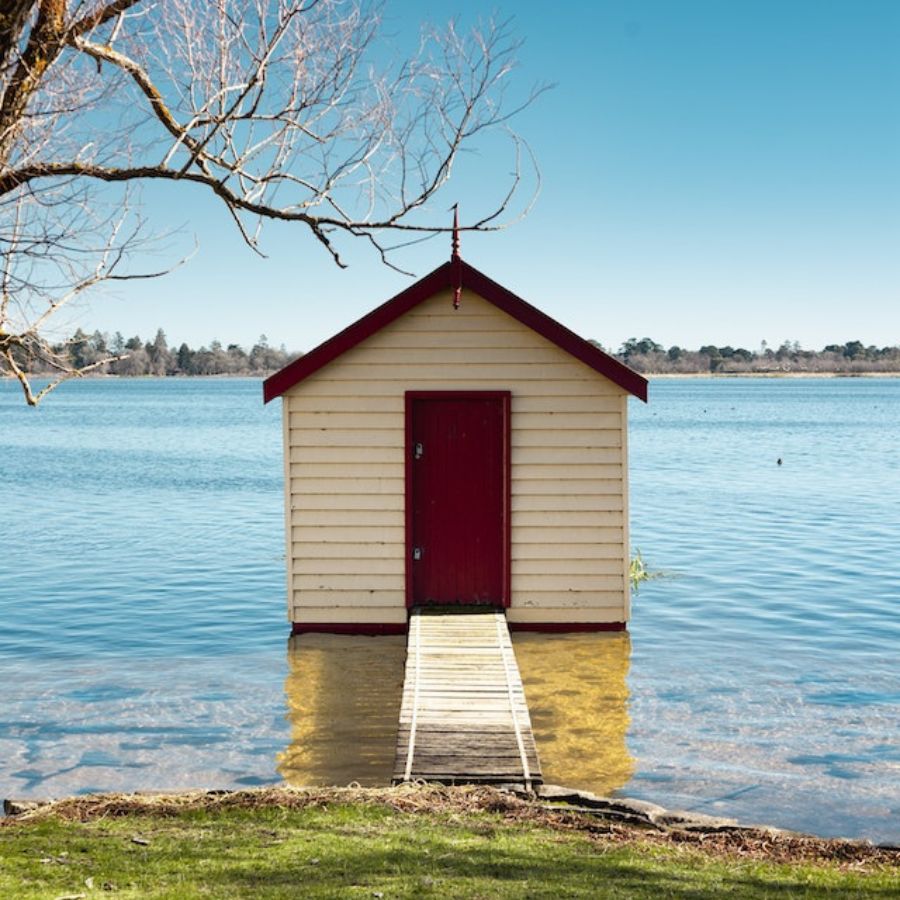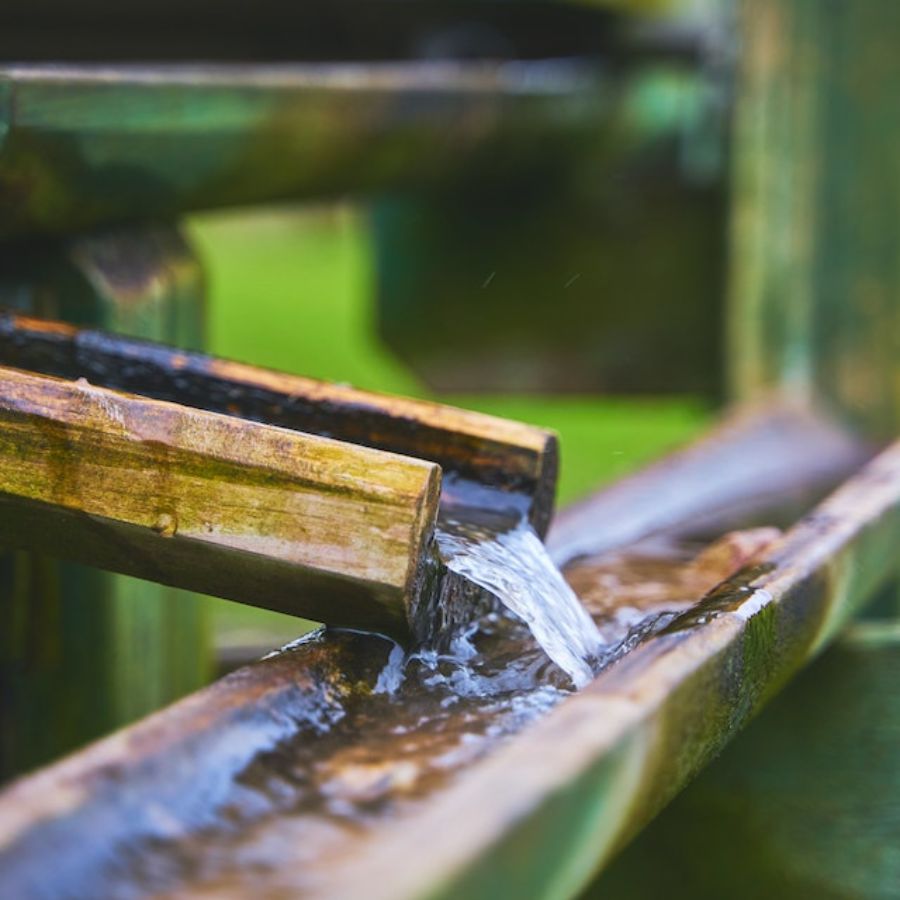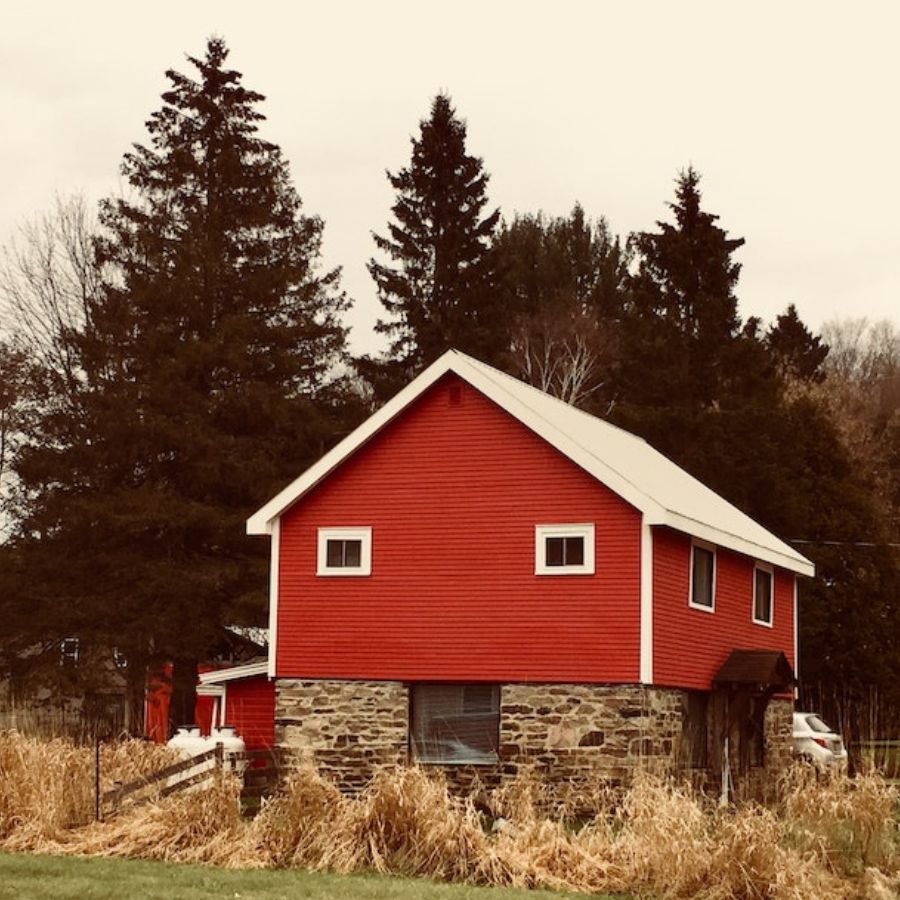What To Put Around Bottom Of Shed To Keep Water Out

When protecting your shed from the elements, keeping water out is crucial. Water can seep into the shed’s base, causing damage, rot, and ultimately reducing its lifespan. It’s essential to take proper measures to safeguard the bottom of your shed from moisture to prevent this.
In this article, we will explore practical strategies and materials you can use to keep water out and preserve the integrity of your shed for years to come. To complement your efforts in keeping water out, learn about how much to insulate a shed to ensure your shed is weatherproof.
Selecting the Right Location

Selecting the right location for your shed foundation is crucial to prevent water damage. Opt for a high-ground area where water naturally drains away from the structure. Avoid low-lying spots prone to flooding, as water accumulation can seep into the shed.
Additionally, consider using concrete blocks or a concrete pad as a base for your shed. These sturdy materials elevate the structure, keeping it above potential water levels. To further safeguard against moisture, you can incorporate mobile home skirting panels around the bottom perimeter of the shed.
These panels act as a barrier and prevent water from seeping in. Lastly, regularly protect the shed’s wood surfaces by applying a waterproof sealant. By selecting the right location and implementing these measures, you can ensure your shed remains dry and well-protected from water-related issues.
Grading the Area
Grading the area around your shed is essential to prevent water from pooling around the structure. Using a shovel or appropriate tools, create a slight slope directing water away from the shed floor and foundation. Further, this helps to ensure that rainwater flows away instead of accumulating near the structure.
If necessary, consider using concrete blocks or a concrete slab as a foundation for your shed, as this can elevate it further from the ground. You may also utilize mobile home skirting panels to create a barrier against water seepage. Proper grading and shed sitting can effectively protect your shed from water-related issues.
Installing a French Drain
Installing a French drain is a reliable and efficient way to ensure proper drainage around your shed foundation. Start digging a trench around the shed, ensuring it slopes away from the structure. Place a perforated pipe in the trench to collect water, covering it with gravel. This layer allows water to flow freely.
Add a geotextile fabric layer on top of the gravel to prevent clogging. This fabric acts as a filter, preventing soil or debris from entering the drain. The French drain effectively diverts water from the shed, keeping the foundation dry and secure. For added stability, consider constructing a concrete slab or piers to provide a solid foundation for the shed walls.
You can also use vinyl panels as an alternative to concrete for shed walls, as they are durable and resistant to water damage. Implementing a French drain and ensuring a solid foundation protects your shed from water-related issues and maintains longevity.
Building a Concrete Footer
Building a concrete footer is an effective measure to safeguard your shed foundation from water infiltration. The concrete footer is a solid foundation by constructing a sturdy barrier around the shed’s perimeter.
Ensuring the footer extends below the frost line is essential, providing stability and preventing shifting due to freezing temperatures. This durable base is a reliable support for the shed wall and helps maintain its structural integrity.
Moreover, a concrete slab or piers can help as alternatives to provide a stable shed base. Consider using water-resistant vinyl panels to withstand moisture exposure for a shed wall. By incorporating a concrete footer into your shed construction, you can fortify the foundation against water-related damage and ensure the longevity of your shed.
Applying a Waterproof Membrane
Applying a waterproof membrane to the exterior of the shed’s base is a vital step in creating a robust water barrier. Opt for a rubberized or bitumen-based product that can repel water effectively.
Apply the membrane to the bottom few feet of the shed, focusing on the areas where the shed foundation meets the ground. This protective layer prevents water from seeping into the shed and causing damage. Whether your shed sits on a concrete pier, shed base, or cinder blocks, a waterproof membrane protects against ground moisture.
By implementing this simple yet effective solution, you can ensure that your shed remains dry and protected from water-related issues, providing secure storage space for your belongings.
Installing Gutters and Downspouts

Installing gutters and downspouts is crucial in preventing water damage to your shed foundation. By effectively channeling rainwater, these components divert water away from the structure’s base, keeping it dry and protected. Install the gutters along the roofline of the shed, ensuring that they slope appropriately for efficient water flow.
Connect downspouts to the gutters, directing water away from the shed’s foundation. This simple addition, whether your shed is on a treated plywood floor, a gravel pad, or any other foundation type, helps to prevent water accumulation near the structure.
Installing gutters and downspouts is relatively easy and provides a cost-effective solution to mitigate potential water damage. With minimal labor-intensive efforts, you can safeguard your shed and maintain a dry and secure storage space for your belongings.
Adding Splash Blocks or Extensions
Adding splash blocks or extensions to your downspouts effectively enhances water diversion from your shed’s foundation. These simple additions are crucial in preventing soil erosion and reducing the risk of water accumulation.
When installed beneath the downspouts, splash blocks or extensions help direct the water away from the shed foundation, ensuring it doesn’t pool near the structure. It is essential if your shed is on a treated plywood foundation or any other material that can hold moisture.
Splash blocks or extensions are easy to install and provide additional protection against water-related issues. By incorporating these measures, you can maintain a dry and secure environment around your shed, minimizing the potential for water damage and preserving the longevity of your storage space.
Implementing Landscaping Features
Implementing strategic landscaping features around your shed can play a significant role in effective water management. You can create a natural system that helps absorb excess water by planting water-loving vegetation or installing a rain garden.
These landscaping features facilitate water infiltration into the soil, reducing the risk of water seepage into the shed. Consider planting native plants or installing a rain garden with plants that thrive in wetter conditions. Moreover, this adds aesthetic appeal and helps with water drainage.
Additionally, ensuring proper grading and the presence of a concrete base can further enhance water flow away from the shed. Easy-to-install landscaping features allow you to create a functional and visually appealing environment around your shed while minimizing the chances of water-related issues.
Before considering what to put around the bottom of your shed, check out this guide about site preparation for proper drainage planning.
Utilizing Gravel or Crushed Stone
Utilizing gravel or crushed stone around your shed is an effective method to encourage proper drainage. Covering the ground with a layer of this material creates a porous surface that allows water to flow and drain effectively.
The gravel or crushed stone is a natural filter, preventing water from pooling around the shed. When water flows, it permeates through the small gaps between the stones and gradually drains away. It not only helps to prevent water accumulation but also reduces the risk of water seeping into the structure.
Additionally, gravel or crushed stone is easy to install and requires minimal maintenance. By incorporating this landscaping feature, you can ensure efficient water drainage around your shed, minimizing the potential for water-related damage and maintaining a dry and secure environment.
Building a Concrete or Paver Apron
Building a concrete or paver apron in front of the shed’s entrance prevents water from entering the structure. By creating a raised platform, this apron helps divert rainwater away from the shed’s doorway, minimizing the risk of water seepage during periods of heavy rainfall.
Constructing an apron using concrete or pavers provides a durable and level surface that can withstand water flow and reduce the chances of water pooling near the entrance. This raised area acts as a barrier, ensuring water goes away from the shed rather than flowing inside.
Whether you choose concrete or pavers, building an apron is a practical and aesthetically pleasing addition to your shed. By incorporating this feature, you can better protect your shed’s interior from water-related issues and maintain a dry and functional space for storage.
Using a Rubber or Vinyl Skirting
Using a rubber or vinyl skirting around the bottom perimeter of your shed is an effective measure to prevent water infiltration. This skirting is an additional barrier, protecting the shed from moisture and potential water damage. Ensure the skirting is appropriately sealed and securely covers gaps or openings.
The rubber or vinyl material is water-resistant and helps to create a tight seal, preventing water from seeping into the shed’s interior. This method is beneficial in areas where the shed sits close to the ground, providing an extra layer of protection against ground moisture. By implementing rubber or vinyl skirting, you can enhance the shed’s resistance to water and maintain dry and secure storage space.
Checking and Repairing Cracks
Regularly checking your shed for cracks or gaps prevents water infiltration. Conduct periodic inspections to identify any potential entry points for water. If you find any cracks or gaps, promptly repair them using suitable sealants or patching materials. This proactive approach ensures that your shed remains watertight and resistant to moisture damage.
Addressing these issues is crucial to prevent further water seepage and potential structural deterioration. By regularly inspecting and repairing cracks, you can maintain the integrity of your shed and prolong its lifespan. Remember to pay close attention to areas where different materials meet, such as joints, corners, and seams, as they are more susceptible to cracks and gaps. You can keep your shed well-protected from water-related problems through consistent vigilance and timely repairs.
Elevating the Shed on Piers or Blocks

Elevating your shed on piers or concrete blocks is an effective strategy to protect it from water damage. Lifting the structure above ground level minimizes the risk of water seeping through the shed’s floor during heavy rain or flooding.
Piers or concrete blocks provide a stable foundation that elevates the shed and ensures water cannot reach the interior. This method is particularly beneficial in areas prone to water accumulation or regions with high groundwater levels.
By raising the shed, you create a barrier that prevents water from infiltrating and causing potential damage to the contents stored inside. Implementing this elevation technique is a practical and reliable solution for keeping your shed dry and maintaining its structural integrity, even in challenging weather conditions.
Applying a Waterproof Sealant
Applying a waterproof sealant to the wooden surfaces of your shed offers an added layer of defense against moisture. This protective coating helps to prevent water from seeping into the wood, reducing the risk of rot, warping, and other water-related damage.
By creating a barrier, the waterproof sealant keeps the shed’s interior dry and well-protected. It is essential to regularly reapply the sealant, as its effectiveness may diminish over time due to weather exposure. Inspecting and maintaining the sealant ensures that it provides optimal protection against moisture.
Applying a waterproof sealant is a relatively simple and cost-effective solution to enhance the durability and longevity of your shed. By taking this proactive measure, you can safeguard your shed’s wooden surfaces from water-related issues and enjoy a dry and resilient structure for years.
Maintaining Proper Ventilation
Maintaining proper ventilation inside your shed is crucial for preventing moisture-related issues. Adequate airflow helps reduce humidity and minimize condensation, which can lead to moisture accumulation.
Installing vents or windows in the shed facilitates air circulation, allowing for the exchange of fresh air and the expulsion of damp air. Furthermore, this helps to prevent the buildup of excess moisture that can cause damage to the shed and its contents.
Promoting ventilation creates a healthier and drier environment within the shed. Proper ventilation can also help prevent the growth of mold and mildew, which thrive in damp conditions. Whether you install vents or windows, ensuring that your shed has proper airflow is a simple yet effective way to maintain a dry and well-ventilated space.
Conclusion
Protecting your shed from water damage is paramount to maintaining its structural integrity and preserving the items stored inside. You can effectively prevent water infiltration and drainage issues by implementing the 15 strategies mentioned above, such as:
- selecting the right location
- grading the area
- installing a French drain
- utilizing gravel or crushed stone
In addition to managing water around your shed, you can also make your own garden in the greenhouse to utilize water effectively.
Additionally, measures like applying a waterproof sealant, elevating the shed on piers or blocks and maintaining proper ventilation further enhance its protection against moisture. Regularly checking for cracks and promptly repairing them is also crucial. By consistently practicing these preventative measures, you can ensure a dry and functional shed that stands the test of time.
Remember to inspect and maintain these strategies to uphold their effectiveness regularly. With proper precautions, you can enjoy a sturdy and water-resistant shed for years to come, safeguarding your belongings and providing peace of mind.

